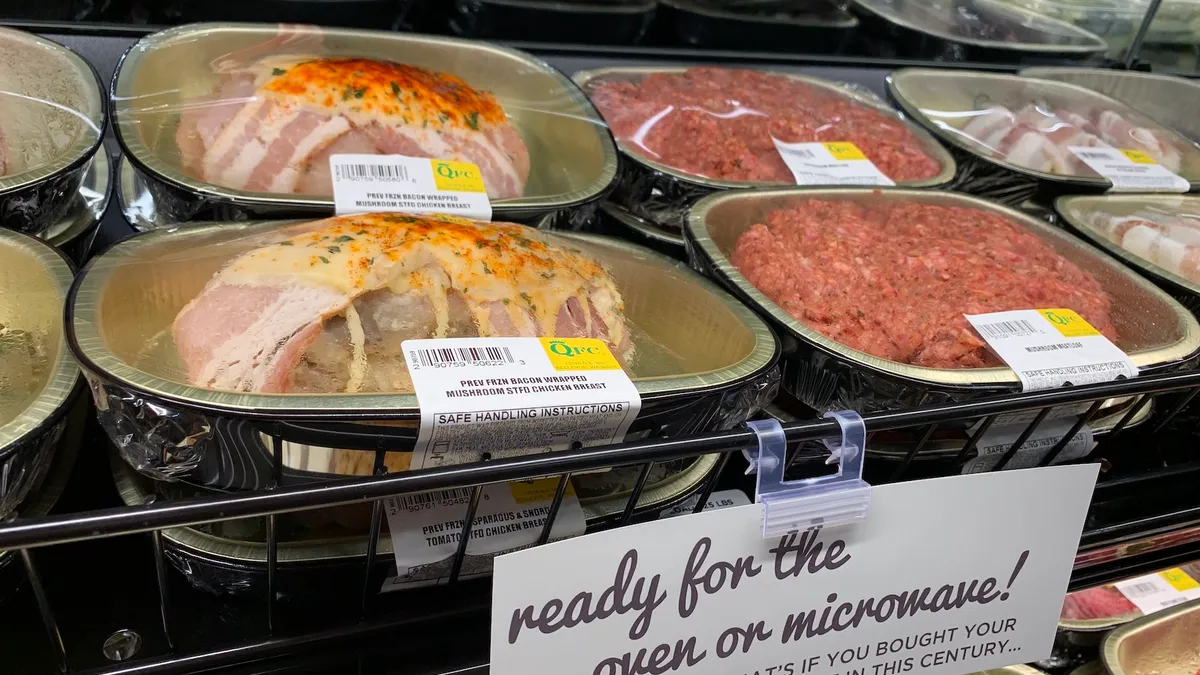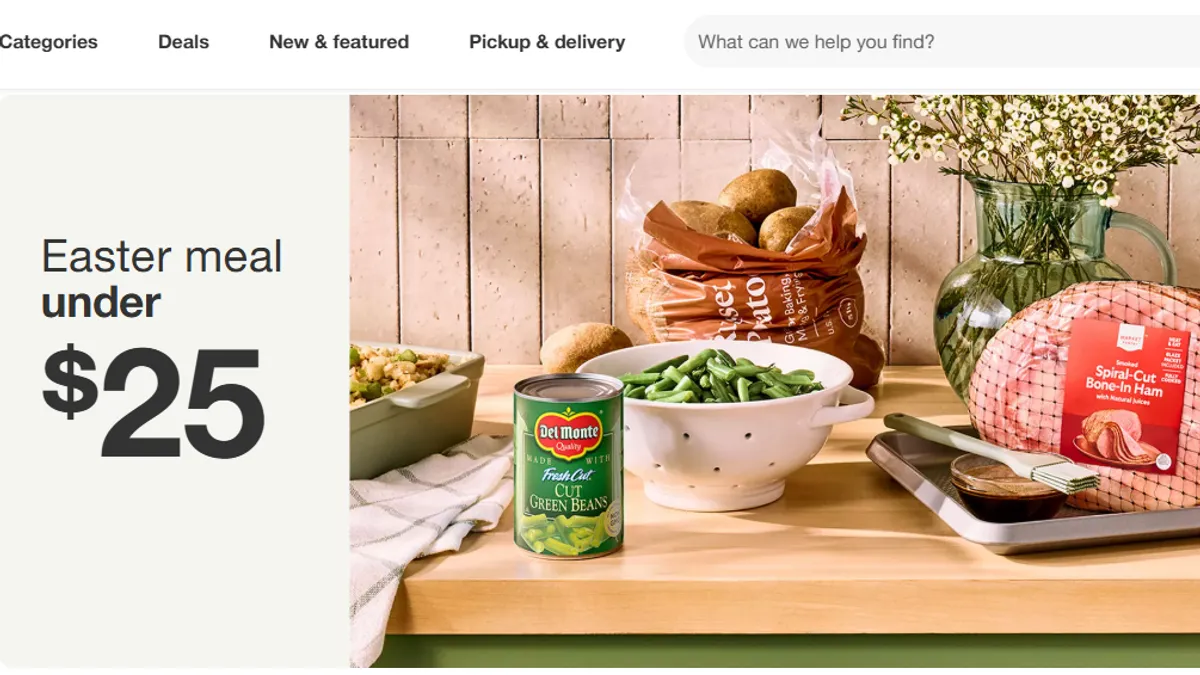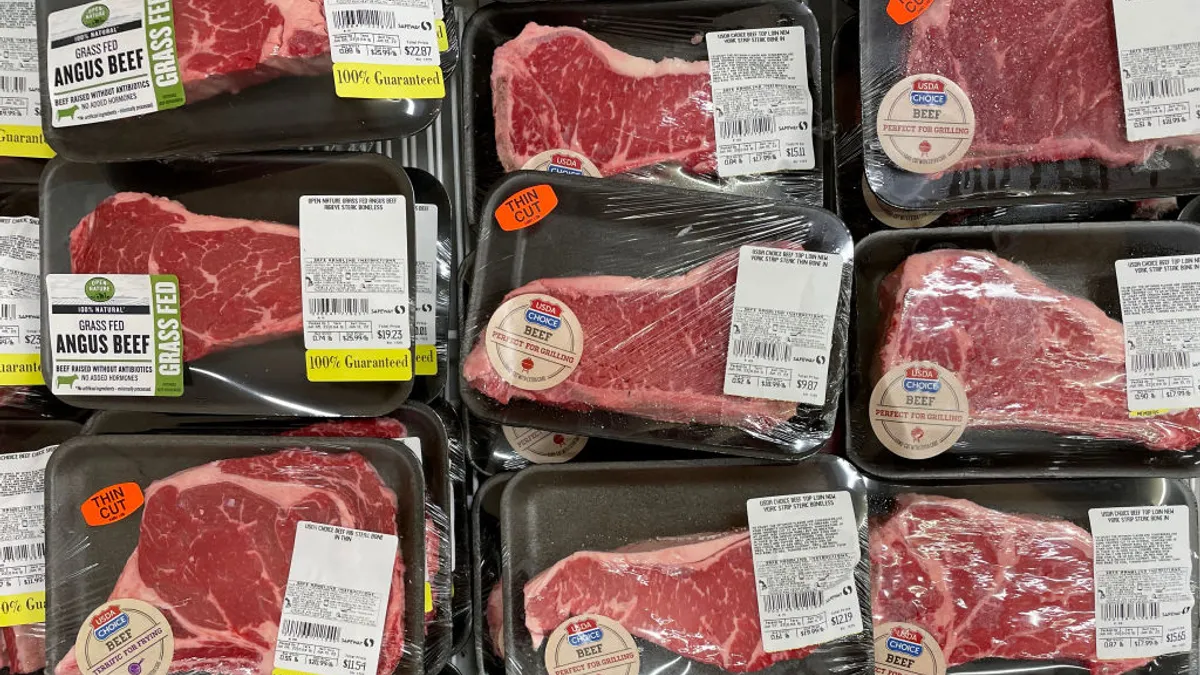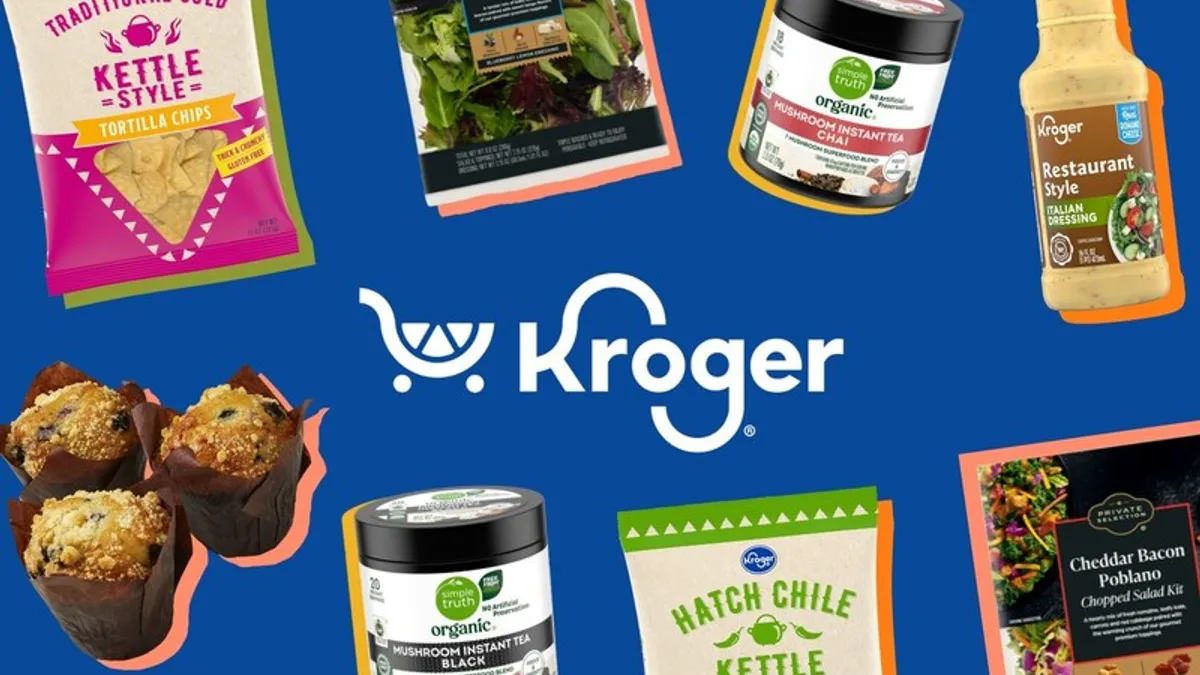Winning more mealtime customers has been a mission for grocers in recent years as they’ve revamped prepared foods aisles, introduced innovative in-store dining concepts and dabbled in meal delivery to attract more shoppers. But winning consumers over from savvy restaurant operators has proven challenging, and pre-pandemic more Americans were getting their meals outside their homes more than ever before.
With the COVID-19 pandemic devastating dining as Americans once knew it, retailers have more of the spotlight and are developing creative ways to reach the growing number of at-home chefs as well as those who still want easy answers to the age-old question, "What’s for dinner?"
The limits on restaurant operations and the increase in time spent at home have created a major mealtime void for consumers, and it’s one grocery stores say they're well-positioned to fill.
Filling the restaurant void
The shift seemingly happened overnight. One day restaurants were open, the next dining rooms quickly shut down and businesses moved to delivery or pickup only. Many restaurants shuttered altogether.
Grocers also took a hit, with the on-site restaurants and dining concepts they've engineered forced to shutter due to safety precautions while full-service bars and deli counters also closed. Retailers have adjusted, however, and so have consumers.
For grocers that have preparation facilities and existing infrastructure to offer made-to-order meals for pickup or delivery, the opportunity is tremendous, according to Barb Stuckey, president and chief innovation officer at food development firm Mattson, and John Connelly, the firm's vice president of innovation.
In an interview with Grocery Dive, Stuckey said she thinks there could be a major shift in the way consumers think about restaurants and restaurant meals due to the pandemic. If grocers have an opportunity to deliver restaurant-quality food off-premise from their own settings, they can come out ahead.
"If I were a grocery operator, I would just ride that wave," Stuckey said.
"If the grocery channel steps up beyond Whole Foods, Kroger, Hy-Vee, Wegmans, I think they could be a player in this area substantially."

John Connelly
Vice president of innovation, Mattson
Connelly said it’s important that grocers focus on advancing both made-to-order and grab-and-go options that shoppers can order for takeout or have delivered to consume off-premise.
"Restaurants will certainly come back, but for a while there will be a bit of a void and if the grocery channel steps up beyond Whole Foods, Kroger, Hy-Vee, Wegmans, I think they could be a player in this area substantially," Connelly said.
A few grocers have already honed their efforts around off-premise meals. H-E-B, for example, has teamed up with local restaurants in San Antonio and Houston to add their prepared meals to a handful of stores. This not only helps the restaurants keep their businesses going, but also allows H-E-B to supplement its prepared food offerings with restaurant quality meals to-go.
In the Midwest, Hy-Vee just launched free curbside pickup for hot meals as well as take-and-bake offerings. CEO Randy Edeker told Grocery Dive the service includes a variety of Hy-Vee’s foodservice options including its Hickory House menu, which includes barbecue and traditional comfort foods; Asian and Hibachi; pizzas and items from Hy-Vee’s Market Grille.
In-store dining, made-to-order and prepared foods are central to Hy-Vee’s business. Edeker said when its on-site dining spaces closed due to the pandemic, the company ramped up what it was doing around delivery and takeout to continue to serve its customers. In addition to curbside service, Hy-Vee is working with DoorDash to fulfill meal delivery.
"On-premise foodservice has been such a huge part of our company for decades and so I think customers have grown used to buying meals to take home and cook from us," Edeker said.
Another major focus has been moving toward family-style meals that will serve two to four people. Edeker said the grocer is putting out basic $19.99 meal packs for four people, and the reception so far has been very positive.
On Easter, Hy-Vee also offered an Easter meal to-go, similar to other meal packs it has offered in the past around Thanksgiving and Christmas. Edeker said Hy-Vee sold more than six times the amount of Easter meals this year than last year.
"We’re planning other meals around other holidays because you think about Memorial Day, Fourth of July, and what’s it going to be like," Edeker said. "Even graduation season — I’ve been challenging our folks on that."
The resurgence of home cooking
Given that most Americans are staying in, buying groceries to cook at home is also on the rise. According to a new report from marketing firm Hunter, 54% of Americans say they're cooking more right now, while 46% say they're baking more.
Marc Rousset, a partner with expertise in retail and consumer goods for consulting firm Oliver Wyman, recently wrote that the onset of COVID-19 means that cooking from home, which was on the decline, will make a comeback. Additionally, in a recent study, Oliver Wyman found 37% of U.S. respondents said they are spending more on groceries than they were before.
Rousset told Grocery Dive that in the past, grocery retailers have focused on selling raw ingredients and leaving meal planning, assembly and cooking to the consumer. But now, as more people are cooking and looking for solutions to make mealtime easier, grocers can offer more value through items like pre-cut veggies, pre-portioned and marinated meats, or take-and-bake meals.
"If you can shortcut any of that process, you stand to have some kind of opportunity coming out of COVID," Rousset said.
Adding value and helping customers cook more at home has been a priority for independent grocer Harmons in Utah in recent weeks. While the grocer chose to close its service case in the meat department during the pandemic, it is still offering its "quick-to-fix" items, which are intended to help shoppers prepare a meal faster.
"A lot of those previously were just available behind the service counter, so we've actually packaged many of those items and made them grab-and-go so people still have those options available to them just in slightly different packaging," Jonnell Masson, Harmons’ dietitian coordinator, told Grocery Dive.
Freshly made soups are now being offered in grab-and-go, family-sized containers, and the deli department recently rolled out "meal builders," which are side dishes like roasted garden carrots, balsamic mushrooms and dirty rice intended to complete a meal.
In the Hunter report, 60% of those surveyed said they are looking for recipes to use the ingredients they have on hand in their pantry or refrigerator. That is something Harmons is working to address, Masson said, because in the wake of panic buying, a lot of people have well-stocked pantries and shelf-stable items.
"Now I think people have calmed down a little bit, they want something better to do with those items," Masson said.
For example, some people have ingredients they’ve never used before and want to know how to cook with them, or perhaps they stocked up on ramen noodles and want to know how to make them healthier.
To help, Harmons is offering short tips and blog posts about how to cook on its website and social channels, with a healthy focus from a dietitian’s perspective. They are also offering pantry-friendly recipe cards in their checkout lanes in stores and making videos with Harmons’ cooking school chefs to give basic skills and how-to’s for both kids and adults. The videos can be viewed on Harmons’ website and social media channels.
"There’s such a drive for people to cook at home."

Randy Edeker
CEO, Hy-Vee
Hy-Vee is also catering to the cook-at-home crowd through its Helpful Smile TV channel, which has garnered nearly 7 million views since it launched in 2018. The company is currently adding recipes and how-to videos to help customers cook, and they are working on a new show about how to bake different items. Site traffic is up 222% year-over-year as people view how-to videos, according to Edeker.
"There’s such a drive for people to cook at home," he said.
Whether consumers want to get a hot meal delivered or create a simple dinner or culinary masterpiece at home, grocery stores are trying to cover all their bases. And while people will eventually return to life outside their homes, the increased role grocers play in their lives during this pandemic could earn retailers the loyalty of mealtime customers long-term.





















